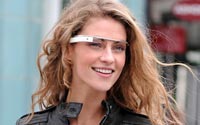Commentary
Now Onto The 'Year Of AR' And The Post-Smartphone Era?
- by Steve Smith , Staff Writer @popeyesm, August 7, 2012
 Sorry. If you were waiting for the
“year of mobile,” it came and went (sometime around February, we reckon). Onto the next bright shiny object, which just so happens to be born from that last bright shiny object. I know I
have said this before, but it is true that Augmented Reality is to 2012-2013 what QR codes were to 2010. Expect to be bemused by the sheer number of bad executions that will rain down upon us as
everyone tries to get a piece of the AR dazzle before the dazzle wears thin.
Sorry. If you were waiting for the
“year of mobile,” it came and went (sometime around February, we reckon). Onto the next bright shiny object, which just so happens to be born from that last bright shiny object. I know I
have said this before, but it is true that Augmented Reality is to 2012-2013 what QR codes were to 2010. Expect to be bemused by the sheer number of bad executions that will rain down upon us as
everyone tries to get a piece of the AR dazzle before the dazzle wears thin.
According to ABI Research, the first generation of AR weirdness is starting to give way to a more productive stage where apps will focus on enhancing the experiences of print media, mobile shopping and education. One imagines that as we start seeing a more concerted effort in specific verticals, then learnings will become apparent and some more purposeful use of AR will emerge for the specific categories.
But ABI Senior Analyst Aapo Markkanen argues that these next-generation apps aren’t really the future of AR. He believes it will be something closer to the eyewear-based model we see prototyped in Google’s Project Glass. Here, the eyewear gives the user a heads-up display of the real world. Geolocation and image recognition might combine to help index the physical world and deliver pop-up data attached to objects and scenes.
I gather Markkanen really considers mobile phones to be the interim technology when it comes to AR. But the future is not technically ready, he says in the brief. “The issue here is that for any eyewear to enable appealing use cases, it needs to have lenses that are large, light and aesthetic,” he says. Add to that the need for persistent connectivity and day-long battery life. “It’s a circle whose squaring will take longer than five years,” he concludes.
But the enticement of connected eyewear also adds to speculation that the mobile phone itself is an interim communications technology. If connected eyewear becomes essentially a real-world search device, then it joins the tablet as the other post-mobile phone device capable of consolidating phone chores with other more liberated and richer interactive media habits that work better off of a phone.
Perhaps in the next five or ten years we will come to see the cell phone as just the first step toward genuine mobility. Its initial, core function dictated the mobile device’s form as a portable phone. But as we embrace a broader range of connected functions like real-world searching and always-on interactive media, the call function could easily subordinate to these other uses.
You’ll show your grandkids your first Razr some day and they will ask, “It only did ‘talk?’” Yes, junior, it was a walking talkie.



